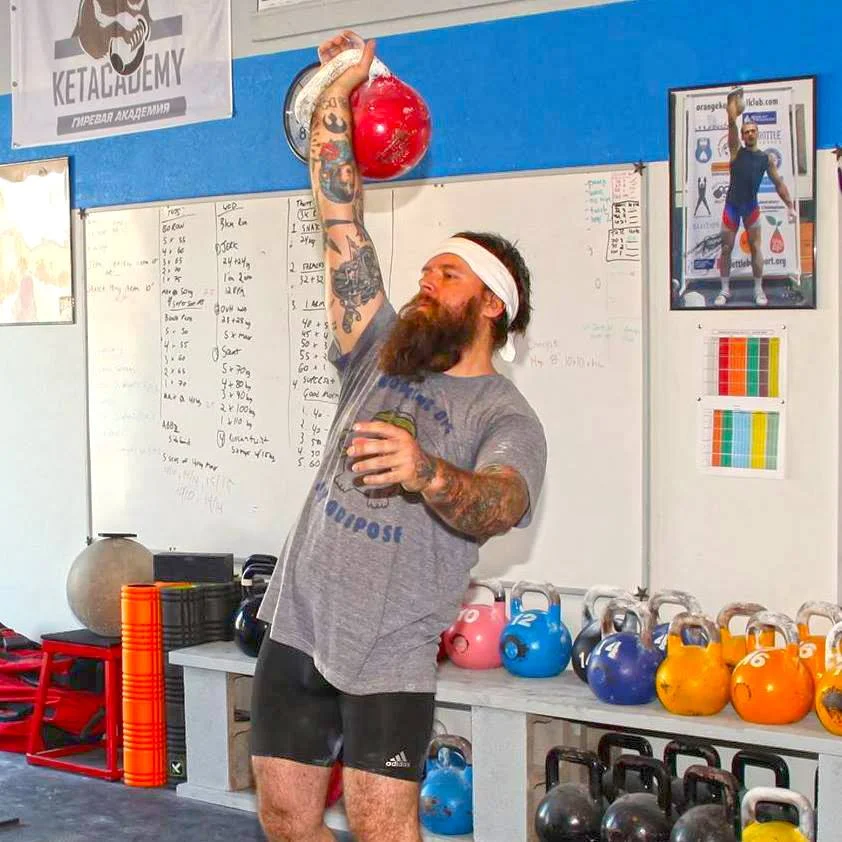Snatch Technique Variations featuring Aaron Vyvial
If you've ever attended a Kettlebell Sport competition, you will notice that everyone's technique varies - almost as if they are using a totally different technique to do the same lift. While there are stylistic differences in how each person lifts, in general the basic biomechanics of the lift always remain the same. The kettlebell snatch is the most technically challenging of the GS lifts, as well as the lift that varies the most between athletes. In the following video, Ketacademy Master Coach and Texas Kettlebell Academy owner Aaron Vyvial describes two variations in kettlebell snatch technique that are aesthetically different, but maintain the same biomechanical principles.
On the upswing:
- Let bell do the work; don’t pull the bell early.
- Wait for bell to go as high as it will go from the swing before straightening your legs.
- To make it fly, straighten legs, lean back and start acceleration pull from the hip.
- Doesn’t matter if the heel comes up or not, don’t try to make it happen, nor try to stop it. It depends on your acceleration pull.
- Keep the arm as straight as possible; if you bend your arm too much before insertion, your timing is off.
- Insert early and let the bell gently glide to the overheard fixation.
On the drop:
- In one movement, lean back, look up, slightly turn the palm to thumb’s up position and raise free hand to the front about chest high.
- Drop the bell, shrug the shoulder a bit and let the arm go long, throw the free hand into back swing.
- As the bell drops, re-grip by pulling hand back a bit through kettlebell window and be ready to catch bell at bottom of swing. Do this before the weight of the bell hits your hand.
- Let bell go into backswing, slightly bending knees to catch bell as it goes through your legs.
- Absorb the momentum of the bell by standing up and leaning forward a bit against the bell in full backswing.
- Don’t go too deep into backswing, by letting your back get too low, you want to be above parallel.
- Scoop or bend your knees deeper than you caught the bell in order to add leg drive to the swing.
Important points:
- When bell is in front of you, lean back to balance the weight, when the bell is behind you, lean forward. Just like a mechanical scale.
- This is not a hip hinge, keep your hips on the same vertical plane, its really just partial squats combines with torso lean.
- Drop the bell with the elbow down, quicker connection to torso will cause less stress on back and grip.
- Don’t throw, fling or pull the bell down. Decelerate the bell going down, accelerate the bell going up.
- The mass of the kettlebell should never go above the hand.
- Hand forward or hand back? Doesn’t matter, but the less movement you have in a lift, the better you will be. If you do go hand back, keep it at a back 45 degree with thumb, if you over rotate to thumb straight back, you can hurt your shoulder or elbow. Thumb forward gives easier insertion for beginners because of lack of rotation.
- Focus on the important points, not the style; use what works for you and discard what doesn’t.
To read my in-depth interview with Aaron (the "librarian of Girevoy Sport"), click here.
